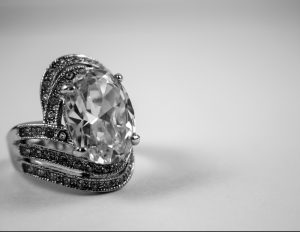Silver is often used to celebrate milestones, achievements, celebrations and ceremonies, as well as for its beautiful ornamental value.
But how much do you really know about silver? What is sterling silver? Why does silver tarnish and how can you clean it? How is silver different from gold?
As we’ve been stocking sterling silver findings and chains for many years, we’re here to give you the lowdown.
Silver: The lowdown
Similar in its composition and character to gold and copper, silver is a very soft, ductile and malleable metal which also takes a very high polish. While it doesn’t have the hardness of gold, it still has many uses, especially when alloyed with other metals to make it harder.
Silver is one of the seven metals of antiquity which were known to prehistoric humans, the others being gold, copper, tin, lead, iron and mercury. As it has been in use for so long the history of its discovery and early use are not known.
It’s a more reactive metal than gold and is also harder to extract from its ores when mined. This meant that supplies of silver were rarer and therefore more expensive until around 1500 BC when the Egyptians discovered new methods of refining it.
Today silver is less valuable than gold, which is rarer in nature and more difficult to mine in bulk.
What is sterling silver?
You might wonder: is sterling silver real silver? The answer is yes. Sterling silver is an alloyed form of silver which is much more suitable to use in jewellery and other metalwork.
Fine silver is 99.9% pure silver. In this form the metal is beautiful and suffers from minimal tarnish, but it’s generally too soft and malleable for many uses, including making most jewellery.
Instead fine silver is alloyed with copper to create sterling silver, which is 92.5% pure silver and 7.5% copper. This percentage of fine silver is why you will sometimes see sterling silver referred to as ‘925 silver’ or hallmarked with a 925 stamp.
The copper makes the silver harder, more durable and therefore much better to work with and use, but without compromising on colour. Most silver jewellery that you buy and wear will be sterling silver.
One downside to sterling silver is that the added copper will cause it to tarnish more easily, with the metal turning dark brown or black over time, especially in humid conditions.
However, it’s easy to clean and beneath the tarnish your sterling silver will still be in great condition: it won’t rust or perish with normal use.
About cleaning silver jewellery
Sterling silver jewellery is an excellent, high quality choice in most circumstances. The metal will not rust or perish, plus if you look after your jewellery it will look great well into the future. You should even be able to pass your silver jewellery on to future generations.
The softness of even sterling silver can make it unsuited to using with very expensive gemstone settings. Gold or platinum are the metals most often used in this situation as they are harder and the settings are less likely to be damaged.
Because silver is soft you should take a bit more care with cleaning it. Never use harsh cleansers such as baking soda or toothpaste as they will remove some of the metal over time. The Connoisseurs Jewellery Cleaner for SILVER is ideal for cleaning your silver while you can also polish with a Silver Polish and a polishing cloth.
Silver vs gold
Your choice of silver jewellery or gold jewellery is primarily down to personal preference, but unless you’re particularly wealthy, a major deciding factor is cost. It may come as a surprise to learn that although silver is of course a precious metal, it’s vastly less expensive than gold.
The reason is primarily that there is considerably more silver in the world than gold. It’s estimated that 1.4 million tonnes of silver has been mined throughout human history, while only 173,000 tonnes of gold have been mined.
How do you know it’s real silver?
In many cases the silver jewellery you own will be hallmarked or stamped with 925 (sterling silver) or 999 (fine silver). You may also see the stamps SS or FS to represent each.
However, not all silver jewellery is hallmarked as it’s not a legal requirement in all countries (including Australia). For some designs the hallmark can detract from the finish of the piece.
So how else can you work out if your silver is real?
One test is to use a strong magnet (preferably a rare-earth neodymium magnet). If the magnet joins strongly to the metal, then it’s not silver or the piece may only be silver plated over a base metal. However, there are other metals that are not magnetic, so this is not a definitive test.
If you’re feeling brave you can also dab a tiny amount of chlorine bleach on the metal in an inconspicuous place and watch for a reaction. Silver (including silver plating) will generally turn brown or black in the presence of bleach. Rinse the metal well afterwards and use a polishing cloth or silver dip to try to remove the discolouration.
By the way, this should give you a clue as to why wearing sterling silver jewellery in a swimming pool is never a good idea!
Finally, you can also purchase a precious metal testing kit online which should tell you what the metal is if you follow the instructions.

